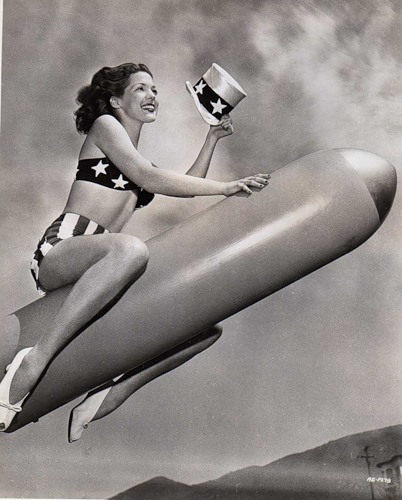
Schoolchildren in the 1950s and ‘60s spent as much time learning how to Duck and Cover in the event of a nuclear missile attack as they ever did about algebra and home economics. They grew up in a perpetual and very real fear that the Cold War would one day escalate into a mind-boggling violence that would be played out on a global scale. Their own kids fared no better, exposed as they were to a seemingly out-of-control 1980s arms race that was, such was the fascination of the time, to be apparently conducted in outer-fucking-space.
These fears were constantly backed up with footage and accounts of the two atomic bombs dropped on Japan by Allied Forces at the end of World War II, on the cities of Hiroshima and Nagasaki, along with powerful (childrens!) fiction such as Raymond Briggs’ “When The Wind Blows”, and the still-terrifying-but not-for-kids BBC drama, “Threads”.
Two generations of children, then, had a very clear understanding of how the world would eventually and inevitably end. It would end in a rain of fire, where dying instantly within the 1-mile blast zone was infinitely preferable to surviving the explosion and then waiting for the sweet release of choking one’s last breath, some weeks later, if you were very lucky, in a refugee camp riddled with the radiation pox and human shit.
None of this death, destruction, fear and creeping terror would have ever been possible without the city of Birmingham.
In the early 1940s, at the city’s University, Rudolph Peierls and Otto Robert Frisch developed a technique whereby Uranium Bombs could be constructed with a critical mass of only 6 kg, which made them a viable airborne threat. This development lead directly to the creation of those deadly missiles dropped on Japan and to 40 years of enduring panic.
